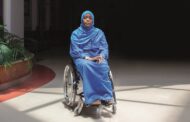By Prof. Eman Khleif Al-Zboon , Fulbright Visiting Scholar at The University of Northern Iowa , USA
Full professor, The Hashemite University, Jordan
Inclusive education in the United States ensures all students, including those with disabilities, receive quality instruction alongside their peers in general education settings. The system emphasizes flexibility, collaboration, and individualized support to meet diverse needs. A key component of this system is the Area Education Agency (AEA), which provides specialized support services to schools, including evaluations, therapies, consultations, assistive technology, and teachers’ professional development. Below is an overview of the key components that make inclusive education successful in American schools.
Iowa’s Non-Categorical Approach to Special Education Eligibility
Iowa utilizes a unique non-categorical approach, designating students who qualify for special education services as ‘eligible individuals’ (EI) rather than assigning traditional disability classifications. This approach recognizes that diagnostic categories alone offer limited guidance for instructional planning while potentially leading to unnecessarily restrictive educational placements. The EI designation emphasizes identifying and addressing each student’s unique learning needs and disability impacts over classification. While avoiding traditional labels, the system fully complies with IDEA—multidisciplinary teams must still document educational impacts to determine services, ensuring appropriate support without categorical designations.
Educational Settings and Service Delivery Models
U.S. schools offer a range of settings to accommodate students with disabilities, ensuring they learn in the least restrictive environment (LRE) possible. These include:
- General Education Classroom with Supports
- Co-Teaching: A special education teacher works alongside a general education teacher to deliver instruction.
- In-Class Accommodations: Modifications such as extended time, assistive technology, or adapted materials.
- Paraeducator Support: One-on-one or small-group assistance within the classroom.
- Resource Rooms
- Students spend part of their day in a separate setting for targeted skill-building (e.g., reading, math) before returning to general education.
- Specialized Programs
- Extended Core: For students with significant cognitive disabilities, focusing on life skills and functional academics.
- Behavioral Support Programs: For students with emotional or behavioral challenges, emphasizing social-emotional learning.
- Alternative Placements
- Virtual Learning: Online instruction for students who thrive in a flexible environment (typically grades 6–12).
- Homebound Instruction: Limited services for students unable to attend school due to medical or severe behavioral needs.
Professionals Supporting Inclusive Education
A multidisciplinary team collaborates to design and implement individualized support:
- Special Education Teachers: Provide direct instruction, modify curriculum, and oversee IEP goals.
- General Education Teachers: Deliver core content while implementing accommodations.
- Related Service Providers:
- Speech-Language Pathologists (SLPs): Address communication needs.
- Occupational Therapists (OTs): Support fine motor and sensory integration.
- Physical Therapists (PTs): Assist with mobility and gross motor skills.
- School Psychologists & Social Workers: Conduct evaluations and support mental health needs.
- Paraeducators: Paraeducators assist students with disabilities by implementing IEP accommodations in general education classrooms. They provide tailored support—from occasional help to one-on-one assistance—under teacher guidance. Their role supplements instruction while promoting student independence in inclusive settings.
- Consultants:
- Special Education Consultants: Assess student needs, guide IEP development, and advise on instructional and behavioral strategies to ensure inclusive practices.
- Disability-Specific Specialists (e.g., Autism or Dyslexia): Provide targeted interventions for specific learning challenges.
Curriculum Adaptations and Resources
To ensure accessibility, schools use:
- Assistive Technology: Text-to-speech software, braille printers, or adaptive seating.
- Sensory Tools: Noise-canceling headphones, weighted blankets, or sensory rooms.
- Modified Curricula: Programs like Readtopia for students with significant cognitive disabilities.
Data-Driven Decision Making
Student progress is monitored through:
- Standardized and Diagnostic Assessments (e.g., Basic Reading Inventory).
- IEP Progress Tracking: Regular updates on goal attainment.
- Multi-Tiered Systems of Support (MTSS): Interventions are adjusted based on student response.
Conclusion
The U.S. inclusive education model prioritizes flexibility, collaboration, and evidence-based practices. By offering varied settings, leveraging specialized professionals, and tailoring instruction, schools strive to create equitable learning opportunities for all students. The support provided by Area Education Agencies (AEAs) further strengthens this system by ensuring schools have access to specialized evaluations, therapies, and instructional resources. This framework serves as a valuable reference for regions developing their inclusive systems.


























